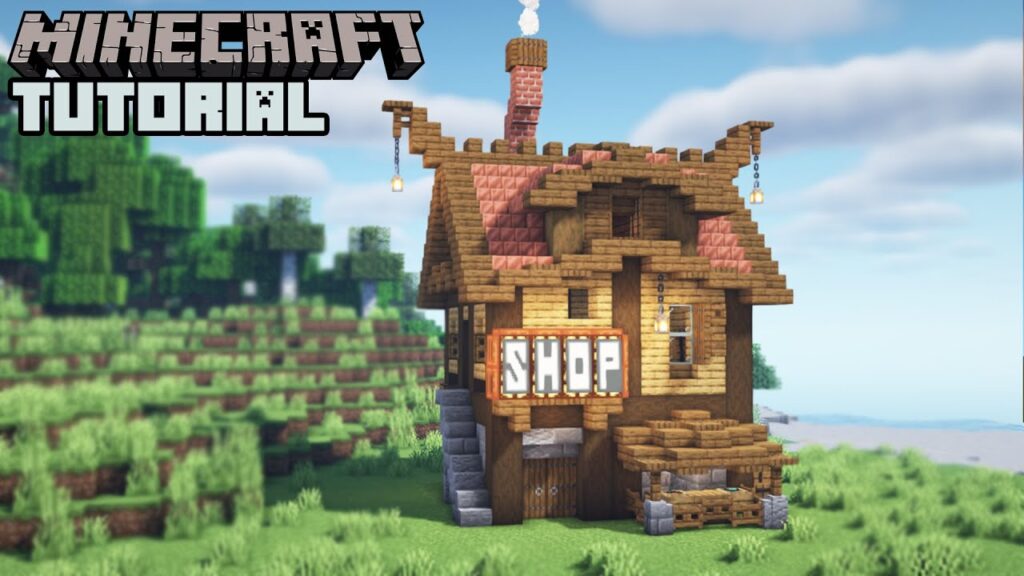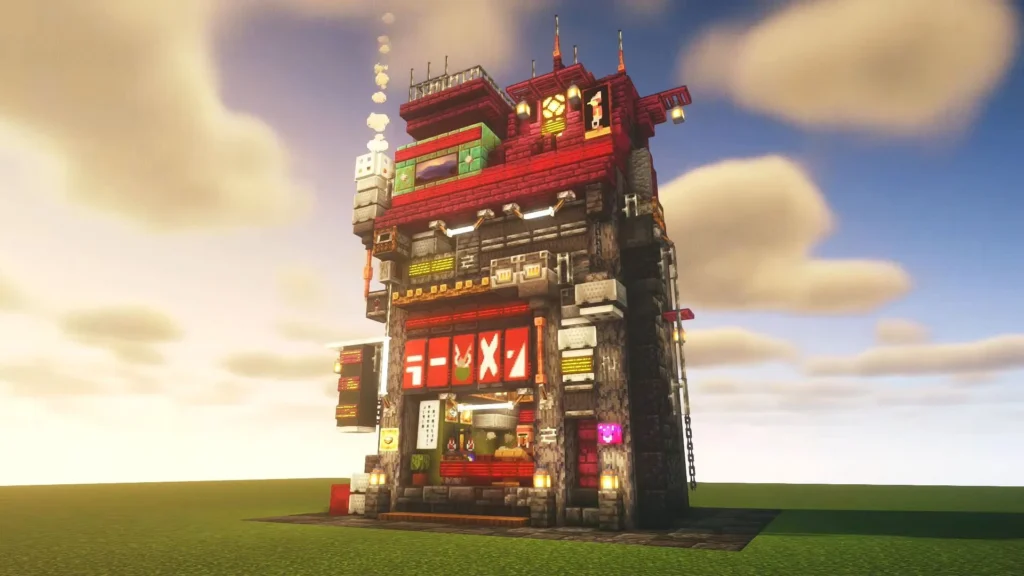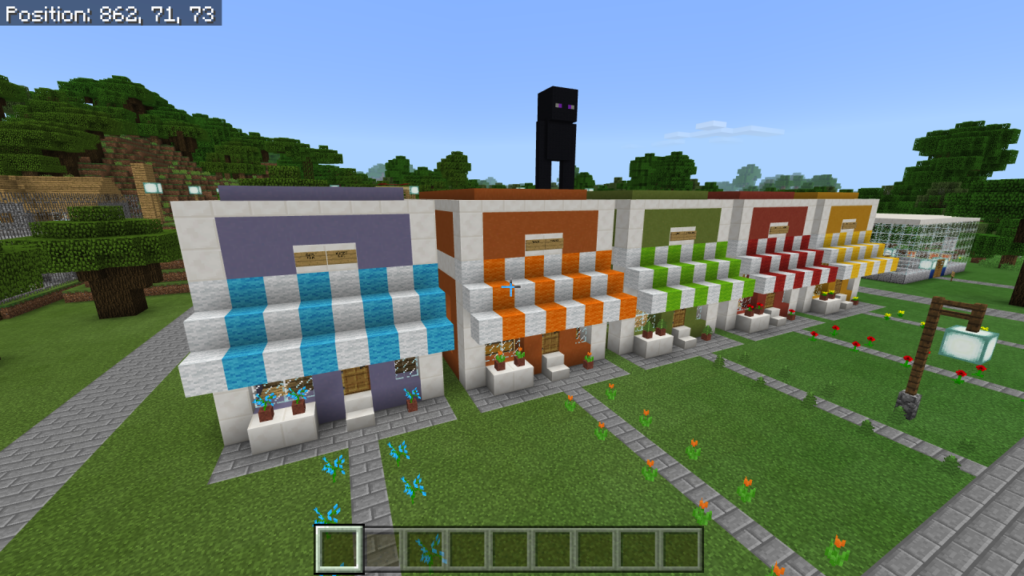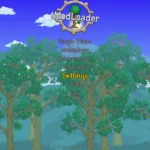A Complete Guide to Minecraft Shops, Signs, and Shopping Districts
Minecraft offers players endless possibilities for building, exploring, and trading. One popular feature in multiplayer servers is setting up shops to trade resources, tools, and items with other players. Whether you’re creating a simple Minecraft shop sign, setting up a shopping district, or using mods and plugins for more advanced shop systems, this guide will walk you through how to create and manage shops in Minecraft, including some options for Rust shop plugins and shop mods for Minecraft.

Minecraft Shop Sign: Setting Up Basic Shops
In Minecraft, one of the simplest ways to create a shop is by using shop signs. Shop signs allow players to create basic trade systems, where other players can buy or sell items using in-game currency or bartering systems. This setup is especially popular on multiplayer servers with an economy plugin.
How to Create a Basic Minecraft Shop Sign
- Place a Chest:
- Start by placing a chest where you want to store the items you want to sell or trade. This chest will hold the items for sale and the currency (if applicable) that other players will use to buy the items.
- Create a Sign:
- Craft a sign using 6 wooden planks and 1 stick. The sign will be used to display information about the items you are selling.
- Attach the Sign to the Chest:
- Right-click the chest to place the sign on it, or place the sign above or next to the chest.
- Format the Sign:
- You can use a basic format to create a shop sign, especially if you’re using economy plugins like EssentialsX or ChestShop:
css[YourName] Item Amount B Price : S Price Item Name- B stands for “buy” price, and S stands for “sell” price.
- For example:
css[PlayerName] 64 B 10 : S 5 DiamondThis means that players can buy 64 diamonds for 10 in-game currency or sell 64 diamonds for 5 in-game currency.
- You can use a basic format to create a shop sign, especially if you’re using economy plugins like EssentialsX or ChestShop:
- Set the Shop Up:
- After creating the sign, the shop will be live. Players can right-click the sign to buy or sell items. Some servers require you to have an economy plugin installed for shop signs to work with currency.

Customizing Shop Signs with Plugins
Some servers use plugins like EssentialsX or ChestShop to automate trading with shop signs. These plugins handle currency, item transactions, and stock automatically.
- EssentialsX: This plugin includes an economy feature and allows for shop signs to be configured with in-game currency.
- ChestShop: A standalone shop plugin that simplifies the process of creating player-run shops using chest and sign systems.
Minecraft Shopping District: Creating a Player Marketplace
In many multiplayer Minecraft servers, especially those focused on survival or economy, players create shopping districts where they can build shops and trade with others. These districts help centralize player-to-player commerce and create a hub for trading resources, items, and gear.
How to Set Up a Shopping District:
- Choose a Central Location:
- Select a location that is easy for all players to access, such as near a spawn point or in a central area on the map.
- Assign Plot Spaces:
- Mark out plots for players to build their shops. You can use signs, fences, or markers to designate these plots. Some servers charge in-game currency or resources for players to buy a plot in the shopping district.
- Set Building Rules:
- Establish rules for the shopping district, such as limiting the size of shops, preventing griefing, and specifying the types of items that can be sold.
- Organize Shops:
- Encourage players to set up themed shops (e.g., tool shops, potion shops, rare item shops) to create variety in the district. You can also have a centralized bank or auction house if you’re using economy plugins.
- Promote the District:
- Make sure to let players know about the shopping district through server announcements, Discord channels, or signs in-game.

Minecraft Shops: Using Mods and Plugins for Advanced Shops
For a more advanced shopping system, many Minecraft servers use mods or plugins that allow for automated trading, virtual currencies, and shop management tools. Here are some popular options for creating and managing Minecraft shops.
Shop Mods for Minecraft
Shop mods expand the functionality of in-game trading by allowing for more customization and features. Here are a few popular shop mods for Minecraft:
- Economy Inc.:
- This mod allows players to set up stores where they can sell items using a virtual currency system. It includes features like ATM machines, customizable prices, and an in-game economy.
- Villager Market:
- With Villager Market, players can set up shops run by villagers. You can assign villagers specific items to sell, and other players can buy items directly from them.
- Trading Post:
- The Trading Post mod introduces trading stations that allow players to trade with other players or NPCs. It’s especially useful in multiplayer worlds where players can set up permanent trading spots.

Shop Plugins for Minecraft
Shop plugins are designed for Bukkit or Spigot servers and offer easy ways to manage player-run shops with features like currency support, stock management, and transaction tracking.
- Shopkeepers:
- This plugin allows players to create shops run by NPC villagers. Players can set up shops that either buy or sell items, and the plugin supports both barter-based trading and in-game currency.
- QuickShop:
- A simple yet powerful plugin for creating shops. Players can set up shops using chests, and the plugin handles buying, selling, and managing stock automatically.
- BossShopPro:
- This plugin offers a more advanced shop system with customizable GUIs. Players can buy and sell items through menus, and it supports virtual currency, enchantments, and custom items.
Rust Shop Plugin: Expanding Trading in Rust
If you’re familiar with Rust, another popular survival game, you might be interested in setting up shops using the Rust shop plugin. Similar to Minecraft, Rust allows players to create in-game shops where they can sell or trade items with others.
Features of Rust Shop Plugin:
- Economy Support: Integrate with in-game currency or custom currencies to manage shop transactions.
- Buy/Sell Items: Players can buy and sell items through custom shop menus, either using real money or in-game resources.
- Shop Customization: Set up unique shop systems based on your server’s needs, from trading resources to selling weapons or blueprints.
Popular Rust Shop Plugins:
- GUIShop: A popular plugin that allows players to create shops using an easy-to-navigate GUI. Players can browse items, make purchases, and even sell items back to the shop.
- Economics: A plugin that introduces an in-game economy system that works well with shop plugins, making it easy to set prices and manage player transactions.
Conclusion
Whether you’re running a multiplayer Minecraft server or playing with friends, creating shops can add a fun and interactive element to the game. Using basic Minecraft shop signs or setting up a full-blown shopping district allows for organized trading and commerce in your world. For more advanced options, consider using shop mods or plugins like Shopkeepers or QuickShop to automate and expand your shop functionality. If you’re running a Rust server, shop plugins can introduce similar trade systems to that game, making your server even more engaging for players.



